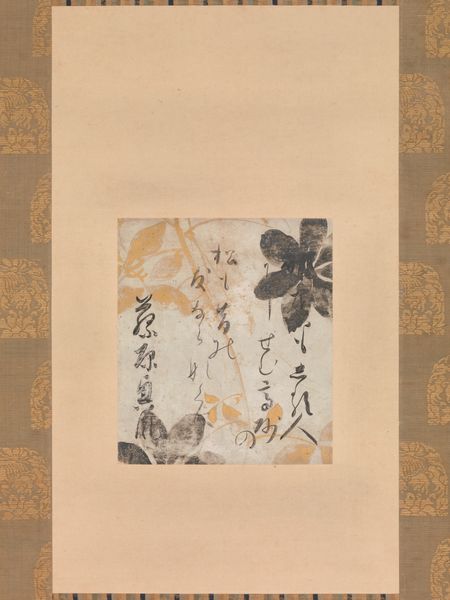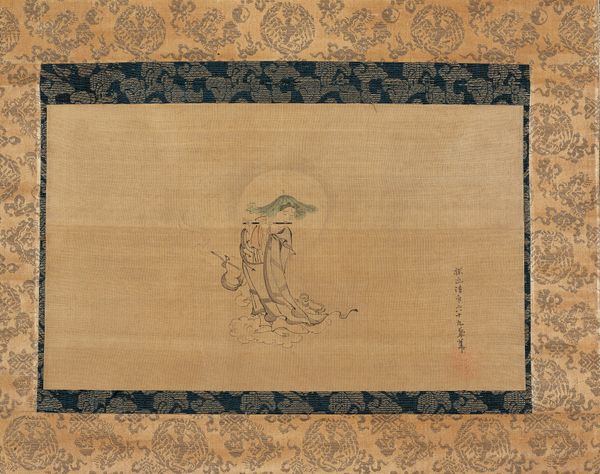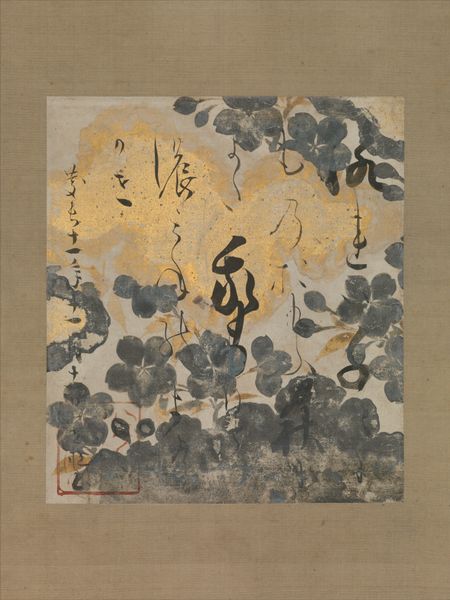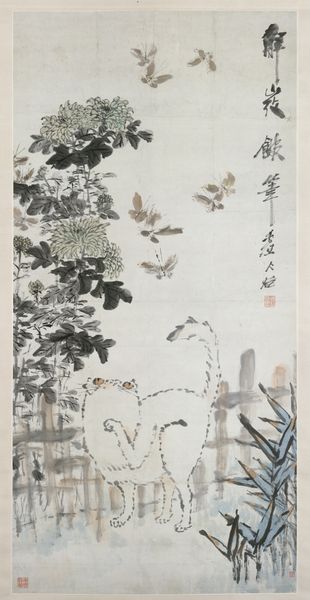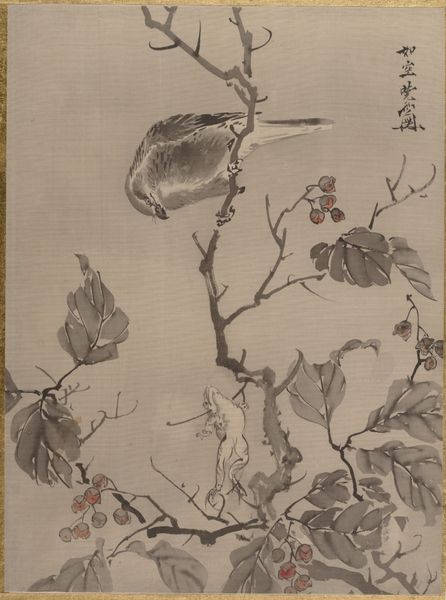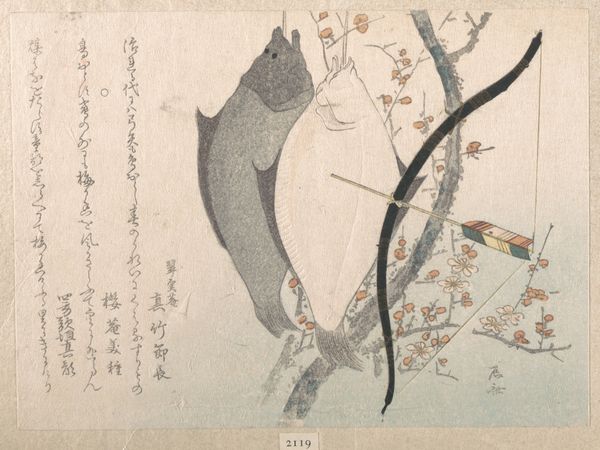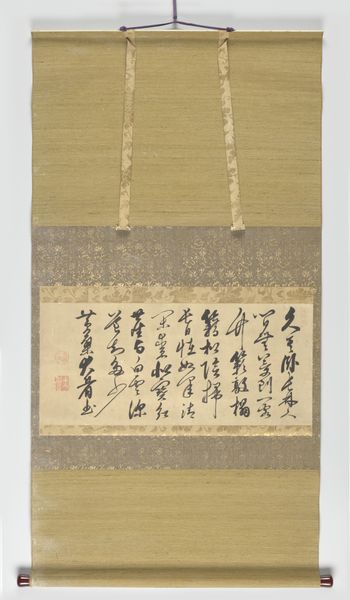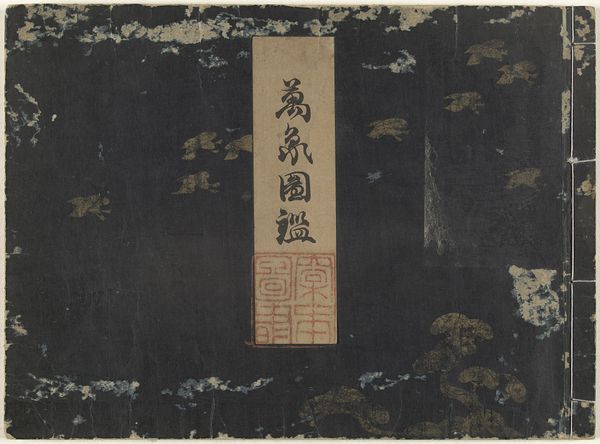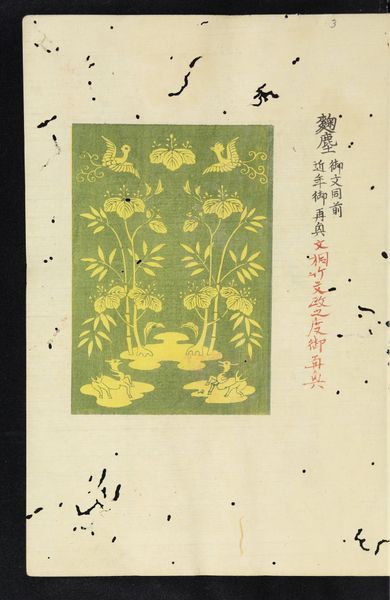
Poem by Onakatomi Yoshinobu with Underpainting of Hollyhocks 1600 - 1633
0:00
0:00
drawing, print, watercolor
#
drawing
#
water colours
# print
#
asian-art
#
landscape
#
ukiyo-e
#
watercolor
#
underpainting
#
calligraphy
Dimensions: Image: 7 15/16 x 6 15/16 in. (20.2 x 17.6 cm) Overall with mounting: 53 1/4 x 20 5/8 in. (135.3 x 52.4 cm) Overall with knobs: 53 1/4 x 23 in. (135.3 x 58.4 cm)
Copyright: Public Domain
Editor: Here we have Shōkadō Shōjō’s “Poem by Onakatomi Yoshinobu with Underpainting of Hollyhocks,” created sometime between 1600 and 1633. The work uses watercolor and print to depict calligraphy and an underpainting, and I find myself curious about the interplay between the written word and the visual art. How do you interpret this work, especially considering its blend of text and image? Curator: This piece sits at a fascinating intersection of visual and literary culture, one steeped in tradition, power dynamics, and social commentary. Notice how the elegant calligraphy isn't just overlaid onto the floral design; it's integrated. In Japanese society during this period, calligraphy was an art form that signalled one's level of education, refinement, and even social status. How might this affect our understanding? Editor: It suggests that the artwork is about more than just the aesthetic beauty of the poem and painting alone, right? It's like the artist is making a statement about their own cultivated sensibilities. Curator: Exactly. And, looking through a modern, intersectional lens, we can think about how access to such art forms—calligraphy, poetry, painting—was historically limited. Who was allowed to create it? Who was it made for? In what ways was it gendered? Editor: So, the layering of poem and painting might be a conscious engagement with existing social hierarchies and cultural values? Curator: Precisely. It makes us consider what kind of commentary the artist makes when integrating, or even subverting, such traditions within the larger socio-political framework of their time. Considering this piece, how do we address these histories and challenge conventional narratives? Editor: I’ve never thought about approaching it this way, it sheds light on a lot more than just the aesthetics! Curator: Precisely. That’s why the most compelling interpretations come from questioning everything you think you know and integrating our past with our present.
Comments
No comments
Be the first to comment and join the conversation on the ultimate creative platform.
